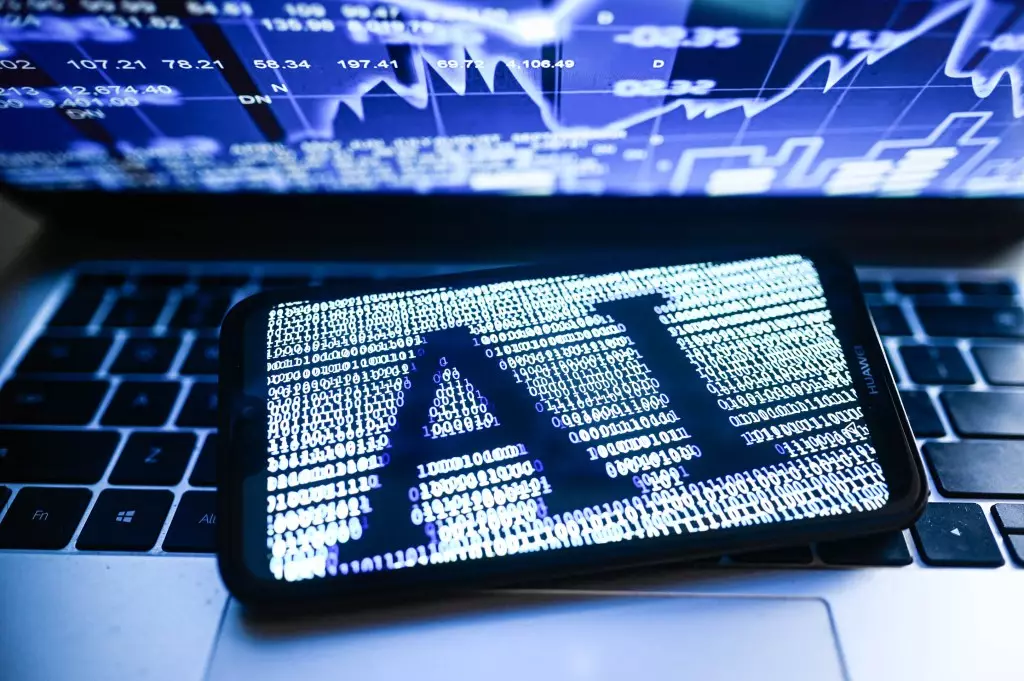In recent months, the intersection of artificial intelligence (AI) and copyright law has escalated into a contentious battleground, with the Motion Picture Association (MPA) stepping into the fray. Their recent ten-page commentary to the White House Office of Science and Technology espoused the need for a harmonious relationship between AI technology and copyright protections. Prominent members of the film industry—including titans like Netflix, Disney, and Warner Bros.—assembled to voice their opinions while navigating through a rapidly evolving digital landscape. The MPA’s position deftly straddles the line between advocating for creative innovation and securing robust protections for copyright owners, but this balancing act raises crucial questions about the future of creativity as we know it.
AI: A Double-Edged Sword
While the MPA acknowledges the potential of AI to amplify human creativity, it equally emphasizes the need to preserve the cornerstone of the creative economy—copyright law. The statement that “copyright is at the core of our industry” comes as no surprise, yet it illustrates a fundamental tension within the MPA’s approach. As AI enters the production pipeline, the danger looms that it could dilute the essence of originality and artistic expression. For artists and creators, there exists an unsettling possibility that corporations might exploit AI tools to jettison the human element, favoring algorithms and data crunching over nuanced storytelling and genuine emotional resonance.
Companies like OpenAI and Google are rallying for reduced restrictions on using copyrighted material to fuel their AI models. They position themselves as modern-day pioneers, arguing that any hindrance in their progress threatens national security and risks ceding technological preeminence to countries like China. This rhetoric is unsettling. Should innovation necessitate the erosion of established legal frameworks that protect creators? Is it preferable for our cultural landscape to be shaped predominantly by algorithms designed for efficiency rather than artists guided by passion and creativity?
A Call for Moderation, Yet a Pending Crisis
The MPA’s commentary emphasized the economic implications of copyright law, noting that the U.S. copyright industries contribute over $2 trillion to the economy. However, this claims a myopic perspective. While the financial strength of the industry is certainly significant, it cannot overshadow the ethical nuance of the creative process itself. Creators increasingly feel marginalized as industries prioritize expedient profit over artistic integrity, evidenced by backlash from Hollywood guilds who accuse studios of failing to protect the intellectual property rights essential to artistic livelihoods.
With various legal actions arising from artists and content creators—including household names like Sarah Silverman—against AI firms, it’s clear that discontentment is simmering. This discontent drives the narrative around AI’s development, yet the MPA has adopted a lackadaisical stance, as though the market dynamics would resolve these tensions organically. Meanwhile, the threat to creativity looms large, and a reactionary approach could very well amplify the disillusionment brewing amongst creators.
The Consequences of Complacency
The MPA’s assertion that “there is no cause to believe the courts and existing law are not up to the task” unearths a troubling complacency. Historical precedent might suggest that existing laws can adapt, but with the rapid evolution of AI technology, there is no guarantee that courts will keep pace. The legal principle of fair use, often cited as a refuge for transformative works, may itself be strained under the demands of a sector increasingly driven by AI’s incursions.
Moreover, it’s important to question whether the MPA’s tempered statements truly reflect the realities facing artists. The adage “garbage in, garbage out” rings especially true here. If AI training data relies predominantly on lesser-quality traffic generated through appropriated content, the output it produces will inevitably mimic that mediocrity. The investment in higher-caliber original works must be protected; nothing less is sufficient for an industry known for its magic and imagination.
The Imperative for Active Engagement
As the debate over copyright and AI continues, the call for action isn’t simply about rhetoric or economic output. Instead, it requires a concerted effort to preserve the sanctity of creative ownership. If we are to advocate for a future where artistic innovation and technological advancement coexist, moderate responses will no longer suffice. The MPA and industry leaders must take proactive steps to ensure that any AI integration preserves the rights of creators, rather than forsaking them for the sake of expedience.
The escalating stakes require more than just theoretical dialogue; they demand action. Industry stakeholders must fiercely collaborate, not just within the realms of corporate interests but also with the artists whose creativity feeds the industry. Any future that allows AI to overshadow or deflate the essence of human creativity is one we should be deeply concerned about, both as a nation that prides itself on innovation and as a society that cherishes artistic expression. The path ahead must prioritize the synergistic relationship between technology and creativity, lest we venture into an era where originality becomes but a relic of the past.

Leave a Reply